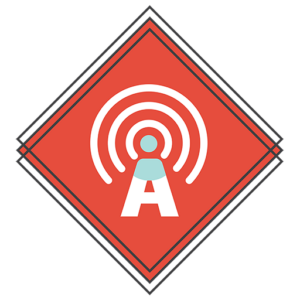
Updated: 10 February, 2025
Have you ever wondered how student attendance is tracked in different universities? Maybe you're a professor interested in learning how other institutions handle it, a curious student, or an IT professional looking for the latest tech solutions. This blog post explores how attendance is tracked across various higher education institutions worldwide. Drawing from my experience as the Product Manager of Attendance Radar, a mobile app used by thousands of university professors globally, I’ve gathered interesting insights through conversations with hundreds of professors across dozens of universities. Let’s dive into it!
Table of Contents
ToggleKey takeaways
-
- Universities vary in their approach to tracking attendance, with some enforcing strict policies while others leave it to students.
-
- Efficient attendance tracking systems are crucial for enforcing policies and understanding student engagement.
-
- Traditional methods like roll calls and passing papers are time-consuming and unreliable, especially in large classes.
-
- QR codes are faster but can be easily shared among students, leading to inaccuracies.
-
- Mobile apps, particularly those using Bluetooth like Attendance Radar, offer accessible, reliable, and cost-effective solutions for attendance tracking.
-
- Attendance Radar provides a robust, affordable option with free and premium versions, making it suitable for various university needs.
Do Universities Care About Tracking Student Attendance?
The first question you might have is whether universities care about tracking attendance. The truth is, some don’t. Some institutions leave it entirely up to students to decide whether to attend class without tracking attendance. However, most universities do care about attendance. This concern often hinges on whether there are attendance policies in place. These policies might require students to attend a certain percentage of classes to pass a course. While some universities lack such policies, many have them either university-wide, professor-specific, or department-specific. We've addressed the necessity of attendance policies in another blog, though we generally believe class attendance is crucial.
Interestingly, some universities struggle with enforcing attendance policies due to the administrative burden. Without efficient tracking systems, these institutions can’t impose their policies effectively. Attendance Radar was created to help with this, and we’ll explain how it can help you at the end of this article.
Why is Student Attendance Tracked in Universities?
Now that we know most universities care about tracking attendance, the next question is why. The reasons vary:
Attendance tracking to enforce attendance policies
A principal reason is to enforce attendance policies. Universities can’t require students to attend 70% of classes to pass a course without tracking attendance. In the Netherlands, for example, working closely with universities like Erasmus University Rotterdam, we’ve seen that efficient attendance tracking leads to more discussions about attendance policies. These discussions revolve around whether to impose existing policies, introduce new ones, or question their necessity.
While we generally don’t agree with strict attendance policies, we believe attendance is important due to the academic, social, and other consequences of missing class. Some universities, especially in the United States, make class attendance a small part of the grade to motivate students to attend.
Tracking attendance for research
Attendance tracking isn’t just for enforcing policies. It’s also used for research purposes. Universities can use attendance data to show students that those who attend classes perform better academically, motivating them to attend.
Tracking attendance to measure student engagement
Attendance is also a good measure of student engagement. Professors can use attendance data to gauge how engaged students are and improve their courses accordingly. During my time teaching at Erasmus University, I used attendance as a key indicator of my teaching effectiveness.
Interested in improving class attendance, check out this article on 5 key ways to improve student attendance.

How is Student Attendance Tracked in Different Universities?
Attendance is tracked in various ways, and while we’ve covered different methods in another article, here are insights from professors we’ve spoken with:
Attendance tracking with old-school methods: roll call and passing a paper
Old-school methods like calling out names or passing a paper are still in use. However, professors find these methods time-consuming and unreliable, especially in larger classes.
Attendance tracking with QR codes
QR codes are faster and less time-consuming but have reliability issues. It’s easy for students to share QR codes with friends, leading to inaccurate attendance records.
Attendance tracking with fingerprint scanners
Only one professor mentioned using fingerprint scanners. While fast and reliable, this method is expensive to set up and maintain, especially in larger universities.
Attendance tracking with mobile apps
In today’s digital age, many professors use various software systems to track attendance, with mobile apps being quite popular. They are accessible, quick to set up, and easy to use. These apps vary in their methods, including geofencing and Bluetooth. As the Product Manager of Attendance Radar, I’ve learned that professors appreciate apps that are user-friendly, reliable, and cost-effective. Our app, Attendance Radar, incorporates these features, offering a reliable Bluetooth-based tracking system.
How Should Student Attendance Be Tracked in Universities?
We believe Attendance Radar should be used in all universities to track attendance. Why? Attendance Radar leverages Bluetooth technology to track attendance easily, quickly, and reliably. Teachers scan for attendance, students mark themselves present, all within seconds and a few clicks. Moreover, as a Bluetooth signal cannot be copied and has a fixed physical range, this system is very hard to cheat compared to QR codes. Our app is also affordable, with a free version for up to 2000 attendances and a premium version with additional features at $9/month or $69/year. We offer a university version that can be piloted for free. Interested in learning more? Don’t hesitate to contact us for a walkthrough or try it out for free below.
Conclusion
In conclusion, while universities have varied approaches to tracking attendance, the primary motivations include enforcing attendance policies, conducting research, and measuring student engagement. Traditional methods like roll calls and QR codes have their limitations, making modern solutions like mobile apps more appealing. Attendance Radar offers a reliable, cost-effective, and user-friendly solution leveraging Bluetooth technology, addressing many of the challenges faced by other methods. By adopting such innovative tools, universities can ensure efficient and accurate attendance tracking, ultimately enhancing the educational experience.
Author
-

Nicolas Montauban
Nicolas is the Product Manager of the Attendance Radar app at Codific. He is a certified Product Owner, an expert in digitalization and has a thorough understanding of the EdTech industry. Nicolas has an MSc in Business Information Management from the Rotterdam School of Management and a BSc in Economics and Business Economics from the Erasmus School of Economics. Additionally, he has worked 2 years as a Teaching Assistant at Erasmus University, giving him an inside look into the higher education industry. This experience has been extremely valuable for him, strongly aiding him in his role as Product Manager, as he developed a thorough understanding of how it is to teach and take attendance in university classes.
View all posts








